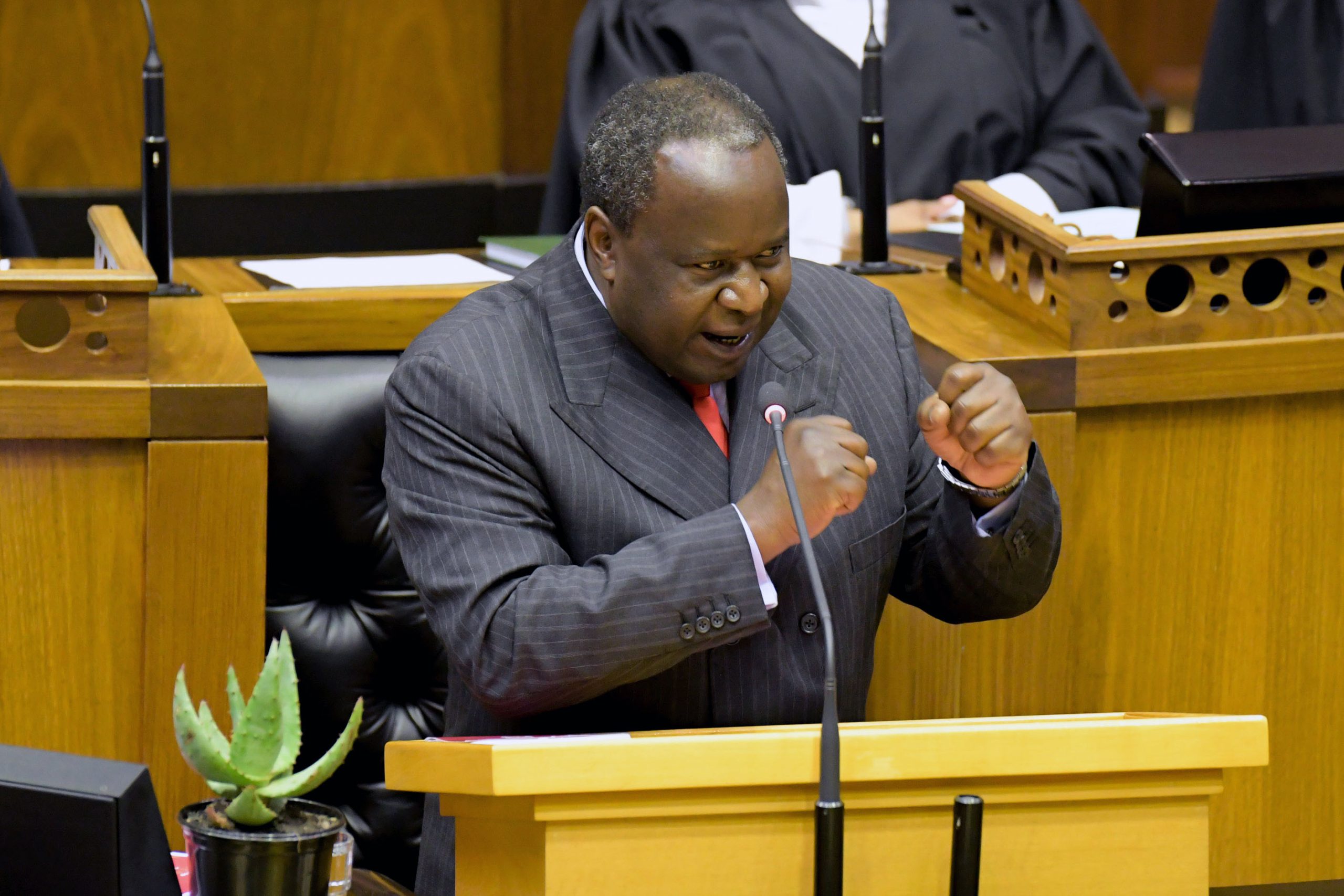No new ideas in latest economic strategy
Minister of Finance Tito Mboweni delivered a lacklustre medium-term budget policy statement, proposing austerity measures that could send the economy into further crisis.
Author:
4 November 2019

It was to be the most important medium-term budget policy statement since Nelson Mandela became president. In a speech in Cape Town, the day before Mandela was inaugurated on 10 May 1994, the country’s greatest ever statesman said: “The people of South Africa have spoken in these elections. They want change. And change is what they will get. We will tackle the widespread poverty so pervasive among the majority of our people.” But after 25 years of democracy and a lost decade in terms of economic development since 2009, South Africa is in its worst postapartheid economic crisis.
According to the policy document, the country is experiencing its longest business cycle downturn since 1945. In September 2019, the South African Chamber of Commerce and Industry said its business confidence index for August had slumped to its lowest level since April 1985, when the country was reeling from political instability, international sanctions and a looming foreign debt crisis. Gross domestic product (GDP) per capita, an international measure of average living standards that takes into account the growth of the population, has declined for five consecutive years.
In recent months, there has been growing public pressure on the government to develop a plan to grow the economy and restructure Eskom’s R441 billion debt. The National Treasury responded by publishing a draft economic strategy at the end of August.
Related article:
Minister of Finance Tito Mboweni said he would release a revised strategy with the medium-term budget statement. Minister of Public Enterprises Pravin Gordhan released a special paper on Eskom’s future the day before the budget. He said Mboweni would provide details on the restructuring of Eskom debt. So the finance minister was expected to release a revised strategy to grow the economy, deliver a statement that would contain rising levels of debt and explain how the government planned to take R250 billion of Eskom’s debt off its balance sheet.
Mboweni quoted statistics that perfectly illustrated the ANC’s mismanagement of the economy over the past 25 years, and its failure to fulfil Mandela’s promise to tackle widespread poverty. “The average person in China is seven times richer today than 25 years ago. The average person in India has become three and a half times richer over the same period. Meanwhile, the average South African is only 1.3 times richer.” In other words, GDP per capita, after taking into account inflation, increased by 1.2% a year between 1994 and 2018. It is likely that rich people took the lion’s share of this meagre growth.
Revised strategy
The revised strategy had few changes. It included a new section on macroeconomic policies, which looked at the performance of the whole economy. It also included monetary policies (interest rates and the exchange rate) and fiscal policies (government spending). The draft strategy only had proposals on microeconomic policies or structural reforms, which look at the behaviour of individual households, firms and markets and make proposals to improve how they function. The International Monetary Fund (IMF) and the treasury concede that these policies do not increase growth in the short term. The revised strategy simply restated the existing failed macroeconomic policies. It took out proposals to privatise Eskom and reform the labour market so as not to offend members of the extended ANC family.
The important numbers to watch in the budget statement were the GDP growth forecast, the size of the austerity measures or budget cuts, the budget deficit, the debt-to-GDP ratio, and support and debt relief for Eskom.
The treasury’s GDP growth forecasts are not credible. As the statement noted, it has overestimated GDP growth in each of the past nine years. An incorrect GDP growth forecast messes up all the other numbers in the budget, such as estimates for revenue and debt ratios. The forecast GDP growth of 1.5% a year for the next three years is an acknowledgement that the revised economic strategy would have no effect on economic growth. This means that GDP per capita will not increase for the next three years.
The austerity number was R200 billon over three years. The treasury said it has identified cuts of R49 billion over the next two years. It wants additional austerity measures of more than R150 billion but has not yet decided where to cut. Options are the public-sector wage bill, higher taxes and privatisation proceeds.
The revised estimate for the 2019-2020 budget deficit was 5.9% of GDP. The revised gross loan debt-to-GDP ratio for 2019-2020 was 60.8%. The net loan debt-to-GDP ratio (after taking into account government bank balances) was 56.1%. These two debt-to-GDP ratios will increase to 71.3% and 67.5% in 2022-2023, respectively. Eskom gets income support of R112 billion over the next three years and no debt restructuring.
But austerity is a self-defeating process, as Institute for Economic Justice (IEJ) researcher Busi Sibeko wrote in a new paper. Austerity reduces GDP growth, the denominator (or bottom part) of the debt-to-GDP ratio. The lower GDP growth rate reduces government revenue and results in a higher budget deficit and a higher level of debt, which is the numerator (or top part) of the debt-to-GDP ratio. This results in an increase in the debt-to-GDP ratio. Also, there is no threshold debt-to-GDP ratio that would trigger an economic collapse – this idea has been discredited.
No new dawn
It is difficult to understand the hysterical media coverage about the debt-to-GDP ratio and the public-sector wage bill. According to the IMF, the estimated world average debt-to-GDP ratio for 2020 is 82.9%. The averages for advanced and emerging economies are 103.7% and 55.1%, respectively. South Africa’s debt-to-GDP ratio is lower than that of other major emerging markets such as Brazil (92.4%), Argentina (69%), India (67.8%), Egypt (84.6%) and Pakistan (79.1%). South Africa has a GDP growth problem, not a debt problem. If the economy grows, the debt will take care of itself.
According to the budget statement, average remuneration in the public sector has risen by an annual average of 8% since 2010-2011, which was not much higher than the increase of 7.2% in the rest of the economy. As a percentage of the population and total employment, the number of public servants is low by international standards, an IEJ policy brief says.
Related article:
As a percentage of government spending, the salary bill has declined to 34% from 41% in 1997, but is still high by international standards, researcher Ebrahim-Khalil Hassen wrote in a recent paper. There are huge shortages – hundreds of thousands – of frontline staff such as teachers, nurses, doctors and police officers. Firing 100 000 workers in this environment would be economic suicide. But there must be cuts in excessive benefits for senior managers.
The budget policy statement was criticised by those on the Left and the Right. Credit rating agency Moody’s changed the outlook on South Africa’s debt to negative. There was nothing in the revised economic strategy that will grow the economy.
Journalists at the press briefing ahead of Mboweni’s speech say he gave the impression of someone who did not want to be there. His reluctance to deliver the statement stands in stark contrast to Madiba’s optimism at the dawn of our democracy.
It may be that Mboweni realises his cupboard of policy tools is empty and that what remains does not work or lies in tatters. He may have also realised that contrary to achieving Madiba’s dream of erasing poverty we, as a country, are stuck without any new ideas.


